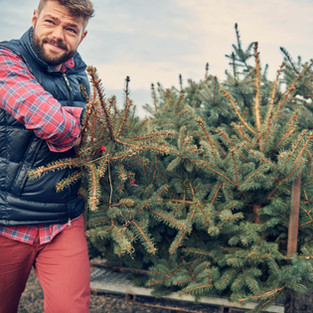Evergreen Expedition
- agforlife
- Dec 10, 2020
- 2 min read
Updated: Dec 11, 2020

The Christmas season is upon us, and as the weather turns frosty and the snowflakes fall, festive decorations and glowing lights begin to spring up around the country, keeping our spirits bright. Christmas trees are a big part of the holiday season for many families—a tradition that started in Germany in the sixteenth century and is still going strong today.(1)
In Canada, Christmas trees were introduced in the eighteenth century with the arrival of German settlers, but gained popularity in 1848 when Queen Victoria’s German husband, Prince Albert, put up a Christmas tree at Windsor Castle.(1) Soon Christmas trees were showing up in houses all over Canada, Europe, and the US.
Now, Christmas trees are a major agricultural crop in Canada, accounting for 1,872 farms (2) and over 69,968 acres of land, (3) supplying stores, gardening centres, and tree lots with firs, spruces, and pines. In total, four million trees are cut from Christmas tree farms around the country.(4)
These are quickly replaced, providing many environmental benefits. In fact, Christmas trees are one of the most environmentally friendly crops in the world. One acre of Christmas trees produces enough oxygen for eighteen people and filters carbon dioxide from the air.(3) The roots of the trees also hold the soil in place, preventing erosion, while the branches provide habitats for birds and other small animals, promoting healthy ecosystems.
But these farms don’t just appear overnight; they take a lot of work all year around to prepare for the Christmas season. From the time the trees are planted to the time they reach that perfect Christmas tree height (between five to seven feet), they must be protected. In the beginning of their lives, seedlings are wrapped in mesh to keep nibbling pests away, but as they grow, regular tending also becomes important.
It takes about eight years to grow a full-sized Christmas tree, and the farmers must be on the lookout for pests, weeds, disease, and weather that can cause damage to the crop. To get the classic triangular shape, the trees are sheared annually, cutting away imperfections and guiding growth. (5) As designated decorations, the health and appearance of the trees is incredibly important to their eventual sale.
When the trees are ready for harvest, they are tagged, cut, and baled using a machine that presses the branches against the trunk and secures them with twine. This allows many trees to be shipped at once, both within the country and across the border.
Some Christmas tree farms don’t cut down their own trees. Instead, they encourage adventurous families to visit, walk through the fields, and chop down a tree of their own choosing. There are many of these pick-your-own style farms around Canada, the majority of which are found in Quebec, Nova Scotia, and New Brunswick.
But the fun doesn’t stop with the trees. Many of these farms also offer activities like sleigh rides, bonfires, hot chocolate, and more, creating a full experience. The Christmas tree farms in Alberta are no exception. So this year, consider bundling up and taking a family trip to a Christmas tree farm near you. You can be a part of the experience and bring a little piece of Christmas cheer to your home with the fresh scent of evergreen.
Sources:









